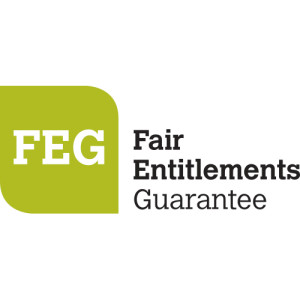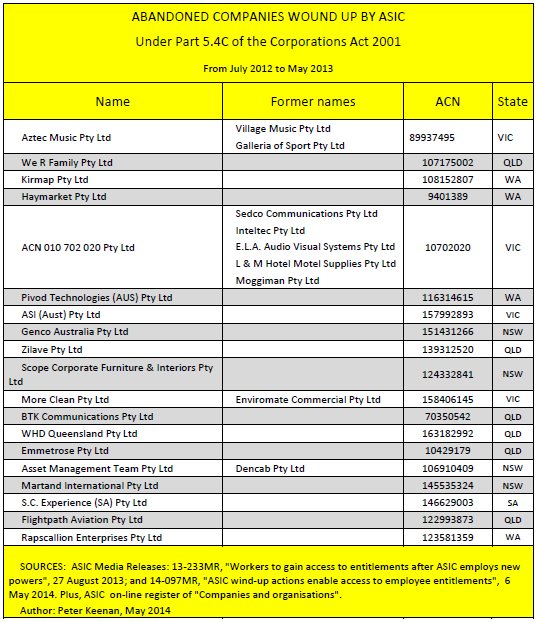(6 July 2015) From 1 July 2015 the Australian Government’s Department of Employment will accept applications from liquidators for funding under its Fair Entitlements Guarantee programme. The following is a copy of the FACT SHEET for the Fair Entitlements Guarantee Recovery Programme.

A division of the Australian Government Department of Employment
Fair Entitlements Guarantee Recovery Programme
This fact sheet provides information for liquidators about the Fair Entitlements Guarantee (FEG) Recovery Programme which aims to improve the recovery of employment entitlements advanced under FEG.
The FEG Recovery Programme
FEG provides financial assistance for unpaid employment entitlements to eligible employees who have lost their jobs due to the liquidation or bankruptcy of their employers. Once entitlements are paid under FEG, the Commonwealth stands in the shoes of the employee as a subrogated creditor and is entitled to claim in the liquidation and is given priority over other unsecured creditors under the Corporations Act 2001 (Cth).
The FEG Recovery Programme is administered by the Department of Employment (‘Department’) with the purpose of funding actions that will improve recovery of amounts advanced under FEG.
Under the FEG Recovery Programme funding may be provided to liquidators to enable recovery efforts, including legal proceedings, which the liquidators would not otherwise have the financial resources to pursue.
How to apply
Actions that the Department may consider funding include, but are not limited to:
- voidable transaction claims, such as unfair preferences and uncommercial transactions;
- insolvent trading claims;
- transactions entered into with the intention to avoid employment entitlements; and
- claims against receivers and secured creditors for failure to pay employment entitlements.
Liquidators of insolvent entities where employment entitlements have been paid under FEG can apply for funding assistance where:
- they are aware of one or more claims that might be brought, on behalf of the company, against any person or persons; and
- those claims have reasonable prospects of success and, if successfully prosecuted, will result in the company recovering property that will improve the return for employment entitlements.
Applications for funding assistance can be made by completing the Funding Application Form available on the FEG website and returning:
- by email to: FEGRecovery@employment.gov.au
- by post to: Fair Entitlements Guarantee Branch Department of Employment GPO Box 9880 CANBERRA ACT 2601
Considerations
When determining whether to provide funding, the Department will have regard to:
- the merits, prospects of success and risks of the proposed action;
- the complexity of the proposed action and its likely duration;
- the total costs that are likely to be incurred, compared to the admitted value of the Department’s proof of debt and the scope for improved recovery;
- the availability of favourable evidence;
- whether the proposed defendant or defendants have sufficient assets to satisfy an adverse judgment; and
- whether sufficient information has been provided, as part of the initial application or in response to a request for further information, to enable the Department to make its funding decision.
If your application is accepted, you will be required to enter into a funding agreement with the Department. The funding agreement will govern what the Department will pay for and how monies recovered are to be applied.
A draft of the funding agreement will be provided to you if your application is accepted. The Department will not be liable to pay any amounts until the funding agreement has been executed and will only provide funding in accordance with the funding agreement.
Want more information?
You can contact the FEG Hotline if you would like more information about the FEG Recovery Programme:
- by phone on: 1300 135 040
- by email to: FEGRecovery@employment.gov.au
If you speak a language other than English, call the Translating and Interpreting Service (TIS) on 13 14 50 for free help anytime.
Further information about FEG is also available on the FEG website (www.employment.gov.au/FEG).
The information contained in this fact sheet is not legal advice. Where necessary, you should seek your own independent legal advice relevant to your particular circumstances. The Commonwealth is not liable for any loss resulting from any action taken or reliance made by you on the information contained in this factsheet. Updated: June 2015


